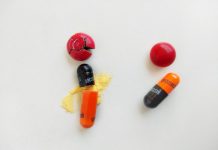Detoxing on your own is a viable option but may not always be the best course of action. Many variables contribute to the severity of the detox process, and if the detox is for a long-lasting potent drug, the withdrawal symptoms may be severe. Other complications such as the personal mental health and physical health should also be considered. In addition, with no one else present during the addiction treatment the intense cravings can be very difficult to deal with on your own and the potential for relapse will most likely be higher. Finding treatment is easier now, be sure to check out the link for a way to detox with trusting staff and caregivers every step of the way.
A few of the effects of the detox that can be expected may include the following:
- Insomnia or hypersomnia
- Nausea and vomiting
- Diarrhea and other gastrointestinal distress
- Appetite changes
- Irritability and agitation
- Anxiety
- Depression
- Strong drug cravings
- Pain
- Disorientation
- Seizure
- Coma
When going through detox in a medical facility with professionals on hand to help, this process may be less uncomfortable. Medication can be given for the withdrawal, and techniques can be used to better manage the cravings, as well as having someone else there to help when willpower is running low.
How are medications used in detox?
If the decision is made to detox under the supervision of a medical professional, various medicines can be used to alleviate both the symptoms of withdrawal but also to provide the body with an alternative substance to help wean off the more potent alternative. Examples of substances where this may be necessary include opioids, alcohol and sedatives.
Medications that can be used in certain situation are known as:
- Benzodiazepines (Valium, Xanax, Ativan, Klonopin) – These are used for those trying to stop using alcohol and are used to minimize seizures that come from withdrawal.
- Methadone/buprenorphine – These are used for opioid withdrawal. As opioids themselves then can lessen the negative effects of withdrawal. These drugs can provide some relief but don’t give the spike or high the same way that drugs like heroin do.
- Clonidine – this is often used to help lower high blood pressure can be used for reducing some of the withdrawal symptoms produced by opioid addiction. They similarly do not produce any intoxicating effect.
What is rapid or ultra-rapid detox?
A rapid or ultra-rapid detox is used in an attempt to get over the withdrawal as fast as possible to reduce the amount of time suffering. Patients are given medication which increases how quickly the withdrawal happens and then given additional medication to reduce the effects on the withdrawal as it happens.
During the process, the patient may be given anesthetics to reduce the negative effects of removing the drug from the system. When the patient wakes up the hope is that the worst of the effects will have passed.
This method may be seen as controversial due to the increase of negative effects, which may outweigh more traditional methods. Additional research needs to be done to really understand the effect of this method. Look up drug detox near me for more information
Check out the link above to view your detox options, no one should undergo detox alone.










![Daily Bite [Make]: Philly Cheesesteak Stuffed Bell Peppers](https://dashofwellness.com/wp-content/uploads/2013/01/Philly-Cheesesteak-Stuffed-Pepper-Daily-Bite-1-100x70.png)
